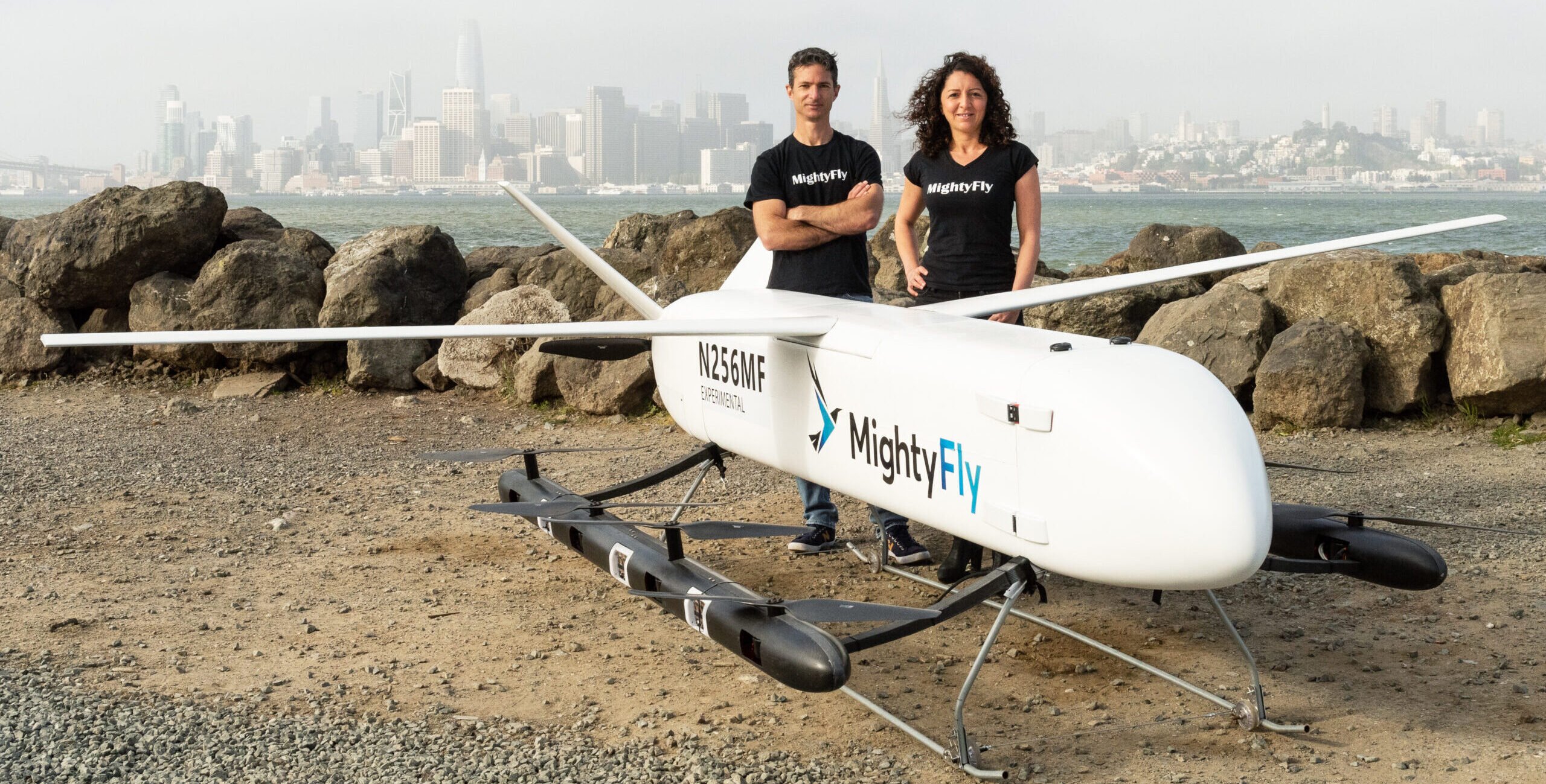Click Here to View This Page on Production Frontend
Click Here to Export Node Content
Click Here to View Printer-Friendly Version (Raw Backend)
Note: front-end display has links to styled print versions.
Content Node ID: 418986
The FAA has granted a special airworthiness certificate to allow MightyFly to start conducting test flights with its hybrid-electric MF-100 autonomous eVTOL cargo aircraft. The San Francisco-based company intends to use the aircraft to provide an almost door-to-door service with autonomous transfers of loads being made via ground transfer stations.
The MF-100 will have a 100-pound payload and a range of up to 600 miles at speeds of 150 mph. MightyFly is planning to develop a larger version with a 500-pound payload.
The company has just completed a $5.1 million seed funding round that will support the start of a pilot business-to-business delivery service in 2022. It aims to later earn a full Part 135 operating certificate to allow it to expand services beyond the limits of the special approval, and this will likely take another two or three years.
According to cofounder and CEO Manal Habib, while there is a growing demand for expedited deliveries, the current business model doesn’t work because to be profitable it depends on each truck and aircraft being almost fully loaded. MightyFly’s objective is to make its entire operation autonomous, with a small team supervising flights and transfers remotely.
The aircraft will be equipped with automatic dependent surveillance-broadcast (ADS-B) In and Out, as well as communicate with the unmanned aircraft system traffic management network and MightyFly’s own 24/7 control center.
At the transfer stations, cargo will be switched in and out of the MF-100 aircraft using a system similar to a conveyor belt to unload via a door in the nose section. The multiple stations will be as close as possible to final addresses for deliveries with the actual "last mile" sector being completed, eventually, in electric autonomous ground vehicles. Customers are expected to include existing logistics providers, retail outlets, and medical services.
The funding round for MightyFly is supported by venture capital groups 500 Startups, At One Ventures, Global Founders Capital, Graph Ventures, and Halogen Ventures. The new capital will mainly be used to recruit more technical staff and build further test aircraft.
Manal Habib and her cofounder and CTO, Scott Parker, were formerly with unmanned aircraft developer Zipline, where she led the flight-controls unit and he was a senior mechanical engineer (having also worked for Volansi). Habib received degrees in aerospace engineering from the Massachusetts Institute of Technology and Stanford University and is a private pilot.
MightyFly is one of several companies developing eVTOL and eSTOL aircraft for cargo operations, but most of the others are intended to have a pilot on board. These include Airflow, which is working on a fixed-wing design that also has a 500-pound payload but that would operate from short landing strips of around 150 feet in length. Xwing is working on converting Cessna 208B Grand Caravans to fully autonomous operations.
Last week, Japanese airline ANA announced a partnership with German cargo drone service provider Wingcopter to deliver pharmaceuticals and other consumer products. The two companies will conduct trials aimed at developing a delivery network across Japan by 2022.
Wingcopter has been operating its 178 drone in trial operations in Zambia since 2019. However, the all-electric aircraft has much less range and payload than the MF-100, being able to carry just 2 kg (4.4 pounds) on journeys of up to 100 km (62 miles).
